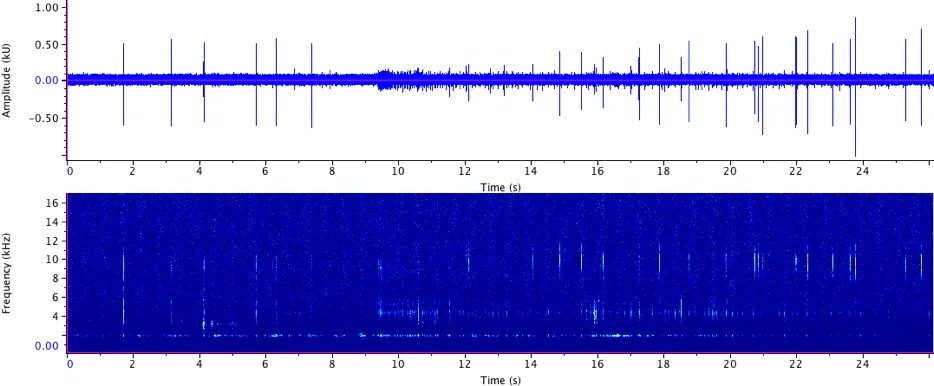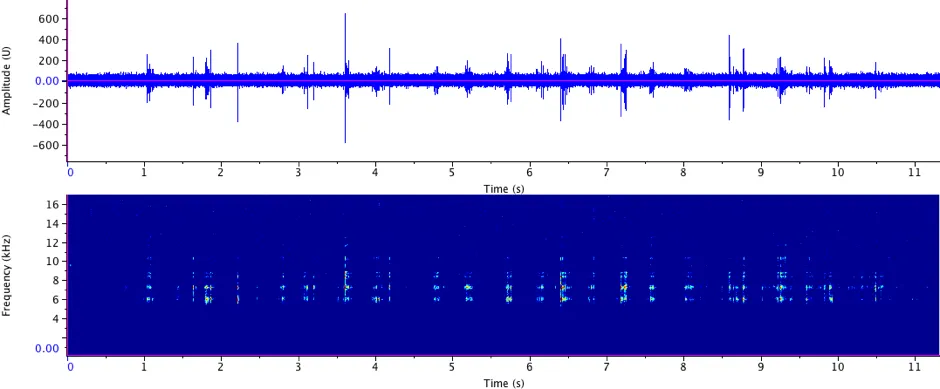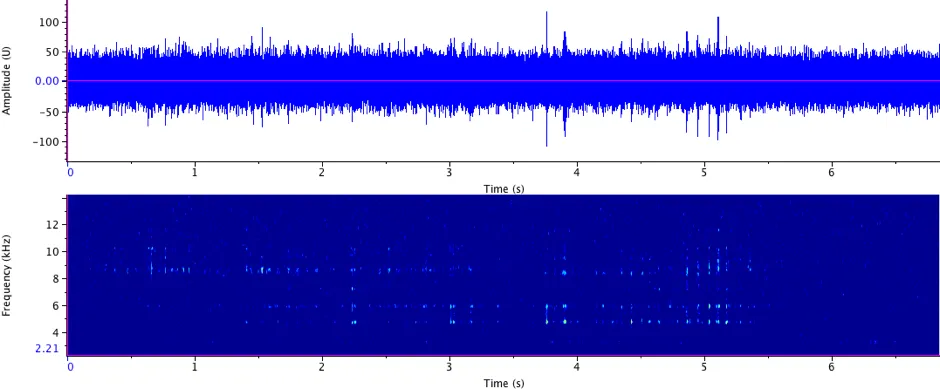Animals can be noisy creatures, but thanks to advances in the science of bioacoustics we’re beginning to understand what sounds even the quietest of them make.
Vital for the survival of many organisms, the ability to produce sound facilitates a wide range of biological activities, including attracting mates, asserting status and locating prey.
The new and rapidly expanding study of biological sound - known as bioacoustics - has to date focused on the calls produced by frogs, bats, birds and marine mammals, increasing public awareness of their intelligence and generating conservation interest.
So, what about water beetles? In spite of their acoustic activity, water beetles have received little bioacoustic interest, but in June 2017, I began recording the sounds that water beetles in British ponds produce.
Aquatic insects, including water boatmen and backswimmers, produce sound by rubbing two hard body parts together, like evening crickets. This process of sound production is called stridulation.
Using an underwater microphone (a hydrophone) the number of stridulations and their diversity can be counted over a standardised period of time. This enables estimations of biodiversity to be made from audio recordings.
Surprisingly, once a hydrophone has been placed into a pond, an otherwise modest collection of aquatic plants and water bursts into life with the sound of many insects producing a chorus not unlike a tropical rainforest at dusk. Even gas bubbles produced by photosynthesising aquatic plants can be detected.
What does a water beetle sound like?
In addition to hearing the sounds produced, waveforms and spectrograms visually display sound by plotting the length of a recording against amplitude and frequency respectively, as shown below.
1
The Lesser Diving Beetle (Acilius sulcatus)
This water beetle call consists of a series of rapid clicks punctuated by a long humming phase that can be observed between 8 and 12 seconds in the waveform (top) and spectrogram (bottom).

2
The Cherrystone Water Beetle (Hyphydrus ovatus)
The sound produced by this small, round cherry-like water beetle (hence the name) resembles that of metal ball bearings being rattled in an egg shaker.

3
Rhantus frontalis (no common name)
Interestingly, this call consists of repeating sections which produce a frequency gap that can be observed between 6 and 8 KHz on the spectrogram (bottom).

The wider implications of bioacoustics
Water beetles aside, bioacoustics is rapidly developing as a valuable tool for ecologists to employ in order to monitor ecosystems during hours of the day when biological surveying is challenging (for example at night), and in a less disruptive way - simply by listening to them.
“Bioacoustics is an excellent non-invasive tool for species monitoring and discovery, especially insects in nocturnal tropical rainforests”, explains Klaus Riede, a senior researcher at the Koenig Museum in Bonn, Germany.
In addition, many early-career researchers are now embracing the future potential that bioacoustics has to offer. Richard Beason, PhD student at Royal Holloway University of London stated that “as a conservation and biological survey tool, acoustic monitoring has the potential to surpass camera traps in importance and use by ecologists.”
Furthermore, solar-powered audio recording equipment is currently being developed to enable continuous recording long after researchers have left. Live data can then be automatically uploaded to online databases for analysis. These databases will act as audio reference libraries, which can potentially be used with machine learning to identify species.
“Advances in automated signal processing using machine learning are opening up new opportunities for wide-scale bioacoustic monitoring”, notes Ella Browning, a PhD student at University College London.
Machine learning is a process in which software ‘learns’ to distinguish between species by analysing the subtle differences in frequency and amplitude of species specific sounds, such as a mating call for example. Such advances in technology may lead to real time species recognition by remote audio recorders, revolutionising biological data collection.
Follow Science Focus onTwitter,Facebook, Instagramand Flipboard